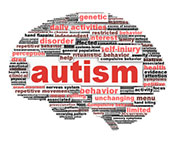
TUESDAY, Sept. 9, 2014 (HealthDay News) — Among infants as young as 6 months old who exhibited symptoms of autism, therapy provided by parents seemed to prevent developmental delays by age 3 in most of the tots, a small new study suggests.
Researchers from the University of California, Davis MIND Institute found that six of the seven infants in the study had caught up in language and other learning skills between the ages of 2 and 3 — before the age most children with autism are usually diagnosed.
But the therapy program used in the study — administered by parents during daily feeding, diapering and play routines — needs to be researched in larger, randomized trials, the study authors cautioned.
“These data do not prove this intervention either prevented autism or … changed the course,” said study author Sally Rogers, a professor of psychiatry and behavioral sciences. “We were really testing a proof of concept: Could the infants’ developmental patterns be changed?” she explained.
“Parents are hearing more and more about autism and the early signs for it. We don’t have diagnostic tools or validated treatments for this age group. So parents and pediatricians are sort of in limbo on this, which is why we’re working so hard on it,” Rogers said.
The study was published online Sept. 9 in the Journal of Autism and Developmental Disorders.
As many as one in 68 children in the United States has an autism spectrum disorder (ASD), according to the U.S. Centers for Disease Control and Prevention. ASDs are characterized by deficits in typical behavior, communication and social skills, and are about five times more common among boys than girls, the CDC reports.
Children with autism are diagnosed at an average age of 4, though some children can be diagnosed as early as age 2, according to the CDC.
Rogers and her colleagues researched the effects of “Infant Start” therapy on seven infants who were between 6 and 15 months old at the start of the study. Four had siblings with autism, but all seven were highly symptomatic for an ASD, exhibiting issues such as reduced eye contact, social engagement and intentional communication. All infants were otherwise healthy, with normal vision and hearing.
Parent participants underwent one-hour training sessions for 12 weeks that coached them to support their infants’ attention to faces and voices, and helped them interpret and improve their babies’ interest in social interactions.
Typically, children diagnosed with autism begin therapy between the ages of 3 and 4 years, six to eight times later than the children in this study, Rogers noted.
“Within six to eight weeks, parents were carrying out interactions at the same skill level as trained therapists,” Rogers said. “It was framed all through play and pleasurable interactions through parents and children.”
After follow-up assessments at 24 and 36 months of age, all but one of the infant participants tested normally for learning skills and language. These “very preliminary results” were compared to a similar group of four symptomatic infants who didn’t receive the therapy — all of whom continued to show significant developmental delays by the age of 3, Rogers said.
Dr. Paul Wang, senior vice president and head of medical research for the research and advocacy group Autism Speaks, called the study results “promising” but said much more research is needed to determine effective autism therapies for younger children.
“The goal of early autism screening is early treatment,” Wang said. “Unfortunately, we’re in a situation where we’re really pushing early screening … and now really need to invest in treatment research to show what are the most effective treatments at that early age. We need to come up to speed.”
Rogers agreed, saying randomized, clinical trials are needed that enroll dozens of young children showing symptoms of autism and then follow them for several years. But the parent-driven Infant Start therapy would be inexpensive to implement, she noted.
“Whenever parents are delivering it and there’s one visit a week with a therapist rather than 20, 30 or 40 hours with someone [else], you’re saving a lot of money,” she said.
But, “it doesn’t mean parents should be drafted into the role of therapist,” Rogers noted. “The reason we moved to this model is because babies are so young and don’t respond well to strangers. They know their family and prefer their parents.”
Wang said that the absence of official guidelines for screening infants symptomatic for autism doesn’t mean parents and doctors can’t act on early suspicions.
“If there are significant symptoms that have drawn the parents’ attention, and the pediatrician or other referral source is concerned about it, we should not dismiss that,” Wang said. “We should not say, ‘The kid is too young, there’s nothing we can do.’ We don’t know yet what’s going to be best but we have early intervention services at this young age that can be started.”
More information
The Autism Society offers more facts about autism.
Copyright © 2025 HealthDay. All rights reserved.

